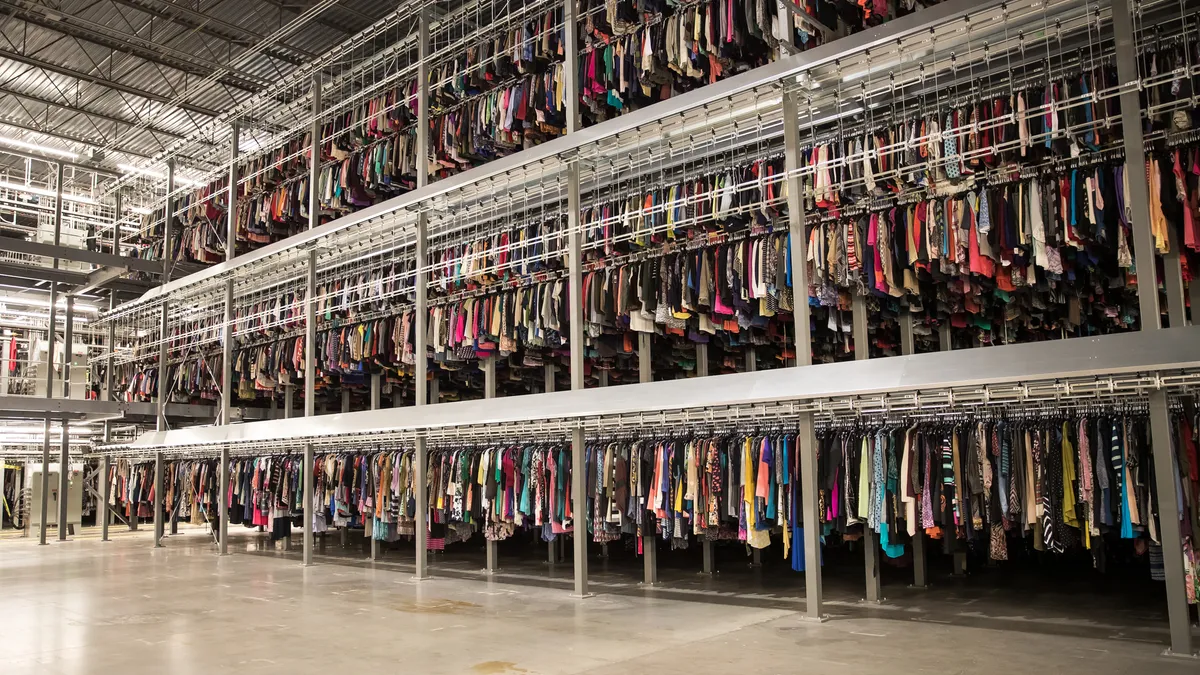Dive Brief:
- Omnichannel, demand forecasting and greater flexibility in operations are among the top priorities for supply chain decision-makers over the course of the next year, according to a small survey of 70 such leaders by Microsoft and Bain & Company released this month.
- Slightly lower on the list was real-time supply chain visibility, in which 40% of respondents plan to increase their investment over the next year.
- Improving supply chain visibility could help supply chain leaders with priorities higher up on the list, such as inventory management and demand planning, according to Mikey Vu, a partner at Bain and lead author of the report accompanying the survey.

Dive Insight:
The coronavirus pandemic accelerated retailers' planned investments in omnichannel or inventory management. Real-time visibility could help with some of the issues retailers experienced during the pandemic related to flexibility and planning, but the industry has a long way to go to get there, Vu said.
"Today, on average, visibility through the supply chain is awfully low," he said.
Retailers can get visibility into stock levels in a store or a warehouse, but that's not the level of visibility they need. Information on what's loaded on the trucks headed to the store is a level of granularity that could help retailers improve their operations and allow them to respond more quickly to shifting markets.
Vu said it's not uncommon for the retailers Bain works with to receive shipments in their loading docks containing SKUs that don't match what's on their manifest. And sometimes they don't get any manifest at all. This can be a result of the supplier failing to share the information, but it could also be the result of information not flowing in the right direction.
A company planning to increase investment in visibility will likely look for technology solutions that help to gather and centralize data.
"It could be as simple as, 'We're going to make sure we get advanced ship notices more reliably from suppliers for every truck that comes.' It could be as advanced as, 'We're going to start putting RFID tags on everything,'" Vu said.
Much of the academic research surrounding real-time inventory visibility focuses on the use of RFID technology. One paper published in 2016 targeted at RFID use in retail and manufacturing concluded the technology improves visibility and "brings the recorded and physical inventories rapidly into alignment."
Companies will also need to tie disparate systems together, bringing data from warehouse management systems, order management systems and point of sale into one place.
"Often, you have all the data you need as a retailer," Vu said. "You just haven't connected it in a way across both management systems and across functions, which actually gives you real insight into the real-time nature of what you're trying to do."
The ideal scenario is a retailer having the ability to see when a shipment leaves a supplier's warehouse and being able to follow it up until it's sold. Visibility can then help a retailer prioritize inventory quickly. The example Vu gave was weather, which can change quickly and result in lost sales for retailers if they don't have the right items in stock.
If a cold spell is coming, "my hats, my scarfs, my soup cans, everything like that, I need to be able to say that gets first loading on every single truck, that gets first priority whenever you're looking through the warehouse on the inbound truck, and that gets first unloading whenever you hit the store," he said.
This ability to see where inventory is, combined with better demand forecasting, can help a retailer make better decisions about where to stage inventory ahead of time and provide guidance to distribution centers on which items to send to which locations, he said. "I can actually see where everything is and get much more precise on being prescriptive about what has to happen," Vu said.
Understanding inventory location is even more important as retailers build out their omnichannel operations and use store inventory to fulfill online or curbside orders. This has been a large part of the work done by Celect, the analytics company that Nike acquired last year.
This story was first published in our weekly newsletter, Supply Chain Dive: Operations. Sign up here.














